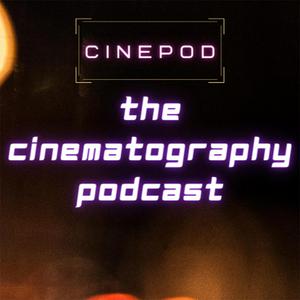Cinematographer Dan Laustsen brings Frankenstein to life
The Cinematography Podcast Episode 332: Dan Laustsen
For nearly 30 years, cinematographer Dan Laustsen, ASC, DFF and director Guillermo del Toro have produced one of cinema's most visually distinctive collaborations. Sharing a deep affinity for rich colors and dark themes, their partnership has yielded five films characterized by an unmistakable aesthetic.
Del Toro's idea for Frankenstein had been discussed since their work on Crimson Peak in 2015. Finally, del Toro let Dan know he was ready to get to work on Frankenstein. Dan re-read Mary Shelley's original work before reading the screenplay. While the script proved a very faithful adaptation, certain scenes were adjusted to better serve the cinematic format. “Because I think Guillermo is a genius director, when he asked me to do Frankenstein, of course I wanted to do that,” says Dan. “His approach to everything is so fantastic. And to me it's a story of love and forgiveness, it's father and son, it's not a horror at all. For me it's much more beautiful, for me it's really about father-son relationships and forgiveness.”
As with every Guillermo del Toro movie, the color palette for Frankenstein was extremely important. Red, steel blue, cyan and amber dominate the film, but the beginning features creamy white and warm, romantic colors to represent the creature's innocence and the initial bond between Frankenstein and his creation. Crucially, these colors were not altered in post-production. Dan explains, “When we are coming into the D.I. (digital intermediate) of course, we are cleaning it up, but the color palette is exactly the same.” Changing the colors post-shoot would ruin the integrity of the design. “The whole color palette of the movie, the lights, the costumes, the hair and makeup, and the set design is so specific, that if we change anything in post, in the D.I., the whole color palette will change. So we never do that.”
Del Toro also enjoys using timeless filmmaking techniques, preferring to use practical effects and capture as much as possible in-camera. Nearly all the sets were meticulously built in Toronto, minimizing the need for bluescreen. Exterior scenes were shot on location in Scotland, and the iced-in ship in the Arctic was a massive set mounted on a gimbal to allow for authentic motion. Dan and a specialized crew even shot all the castle exteriors in miniature, featuring practical explosions done on the small set.
The Frankenstein sets were designed so that all lighting could be built in, either with practical fixtures or with external lights placed specifically through set windows. For the castle dungeon, Dan and his gaffer had to design a special rig to effectively simulate skylights shining from above.
Dan kept the camera movement fluid and floating, shooting the entire film on very wide-angle lenses. “Our idea was to shoot a period movie, but shoot it very modern. The camera is a part of the storytelling,” he notes. The camera becomes the third dimension to the storytelling, lending it the ability to be part of the action rather than a stationary, distant observer. Every shot was specifically designed and executed with a crane, a hothead, or a Steadicam, using just one camera. The wide lenses captured the entire set, which was critical to Dan. “Because the set is so beautiful, and the costumes are amazing. Everything is very organic, and we really like to see that as much as we could. And to move the camera again is storytelling in a dramatic way.”
Through his enduring partnership with del Toro, Dan has framed Frankenstein and his Creature's story not in shadow, but in the unforgettable light of forgiveness. “Love and forgiveness are very strong things in the movie and the world,” he says. “For me, it's not a horror movie at all, it's a love story.”
See Frankenstein now streaming on Netflix.
Find Dan Laustsen: Instagram @dan.laustsen
Hear our previous interviews with Dan Laustsen: https://www.camnoir.com/ep152/
https://www.camnoir.com/ep36/
The Cinematography Podcast website: www.camnoir.com
YouTube: @TheCinematographyPodcast
Facebook: @cinepod
Instagram: @thecinepod
Blue Sky: @thecinepod.bsky.social


